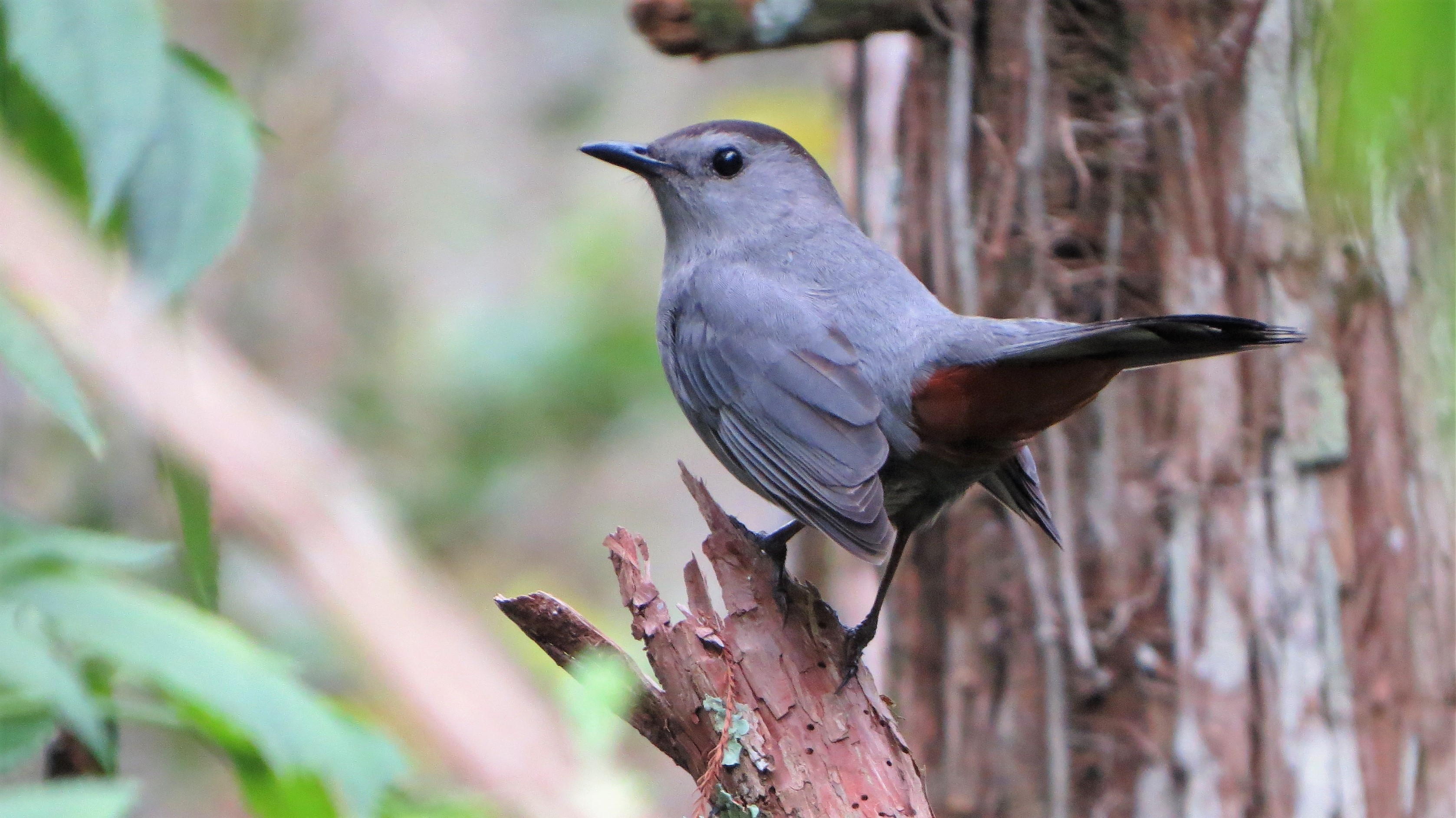
March Bird of the Month is the Gray Catbird, and here is the article in the upcoming April 2019 Kite written by Clive and Celecia Pinnock.
March Bird of the Month – Gray Catbird
Gray Catbird (Dumetella carolinensis)
by Clive and Celecia Pinnock
This dark gray bird is a member of the Mimidae family, which includes Mockingbirds and Thrashers. It is a family of birds noted for the rich variety and repertory of their songs, in which at times they mimic or incorporate segments of songs sung by other bird species residing within their territories. One of the most notable sounds produced by the Gray Catbird is the “mewing,” from which it gets its name.
The catbird’s dark gray body is accented by a black cap and tail and chestnut undertail feathers (coverts), the latter not readily apparent until the bird lifts its tail in alertness to something that has caught its attention or when observed from below the branch on which it is perched. The habitat typically preferred by catbirds is that preferred by other members of its family, namely a variety of thickets, shrubs, hedges, forest edges and streamside brushes.
Both male and female adult birds are identical, but the male’s conspicuous behavior while establishing his territory, singing and actively driving other species from his home turf, makes him easily recognizable. For most of the year, the catbirds’ diet includes an assortment of ground-dwelling insects (ants, beetles, grass hoppers, crickets, bugs and even spiders, caterpillars and millipedes), which they locate by scratching through leaves on the ground. These food items are also the main fare for the nestlings, which have a significant need for protein in the earliest stages of life. Adults also avail themselves of seasonal fruit in the form of both wild and cultivated berries (elderberries, poison ivy, strawberries, cherries, greenbrier, bay and blackberries), and at times they are viewed as garden pests because of their fondness for cultivated fruit.
The nest is built predominantly by the female out of building material supplied by the male. The cup-shaped nest is placed in dense thickets, generally a few feet above the ground. From two to six eggs are laid and incubated by the female for 12 to 15 days. Both parents, however, assist in feeding and caring for the young. When nest parasites such as Brown-headed Cowbirds lay their eggs in the nests of catbirds, their eggs are generally recognized, pierced and ejected.
Please check out the picture by Susan Young in the upcoming April KITE cover and to see the slide show of the entire virtual gallery this month, along with photographer etc — click on BOM SLIDE SHOW below the pictures displayed here:
[flickr_set id=”72157706759111865″ max_num_photos=”100″]


Comments are closed